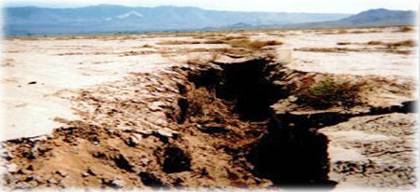Impact of proposed mining project at
Apache Leap and Oak Flats, Superior, Arizona
To: Committee on Resources regarding Bill H.R. 2618
Submitted by: Nancy Freeman, Executive Director, Groundwater Awareness League
Date: May 24, 2006
Introduction: There are several critical issues involved in the releasing of public land to a mining company. I know I live by a mine that is polluting our water and air, and beginning to cause subsidence to our streets and homes from depletion of the aquifer.
Oak Flat is in U.S. Forest Service land. Some of Apache Leap is in patented formerly USFS land, but most of it is in USFS land. Resolution gets 3,025 acres of USFS land and has already purchased some similar amount of patented land from the former mining company that dug massive amounts of tunnels in the area in the 4,000 acres of patented land, which includes some of Apache Leap.
Outline of concerns:
1) The Apache Leap is a traditional place of Native Americans.
2) The sites of both Apache Leap and Oak Flats are not replaceable.
3) The dewatering of the tunnels will cause serious drawdown in the water table of the region causing scarcity of water and subsidence.
4) Mine processing pollutes the environment.
5) Enhanced pollution due to technological processing.
6) Tunnel mines are a hazard to mining personnel.
7) We do not need more people/jobs in Arizona.
8) Reclamation is an expensive endeavor; Arizona does not require bonds for cleanup.
9) Addendum: Notes on impact of Sulfuric Acid Leach/Electro-Winning processing
Conclusion: Although copper mining is an important and viable legacy in Arizona, copper mining produces such large quantities of waste, pollution and devastation of the landscape that it should be allowed only in isolated areas, away from population centers, and in areas that have plentiful water. Public access to such a site is a hazardous and impossible. The exchange must be stopped now!
I. Honor the culture and traditions of Native Americans. We must consider that Apache Leap has a historical value to the Apaches, in that it was the site where many of their ancestors lost their lives. “Gringos” do not honor the spirits of their ancestors, nor respect their elders, so it is difficult for us to imagine the connection the Native Americans have with their elders and ancestors, even though this practice is also found throughout Asian cultures. However, we do honor our heroes: Little Big Horn, where Custer lost his life, is now a National Monument. How can we justify turning a similar spot in Native American History over to industry to be desecrated?
Excerpt from History, Manners and Customs of the Indian Nations by John Heckewelder:
They are then told that their ancestors, who received all this from the bands of the great Spirit, and lived in the enjoyment of it, must have been informed of what would be most pleasing to this good being, and of the manner in which his favor could be most surely obtained, and they are directed to look up for instruction to those who know all this, to learn from them, and revere them for their wisdom and the knowledge which they possess; this creates in the children a strong sentiment of respect for their elders, and a desire to follow their advice and example.
II. Copper can be found in many places. Apache Leap and Oak Flats can not; they are unique. The mining company claims that it is exchanging other land for the valuable sites of Apache Leap and Oak Flats. The land that they are proposing for exchange is in no way comparable to these sites. Any use of this land for mining would convert the whole area into a wasteland—including the cliffs. The tunneling could deface the landscape, as well as making it dangerous for any hiking or rock-climbing in the area. There’s the infamous Tombstone, AZ story of the horse, carriage and rider who fell some 20 feet into a sinkhole (created by mine tunneling) and survived. Here is a description of the “cave-blocking” that Resolution proposes to use for extracting ore from a mining report:
Block caving is a mining method in which ore is allowed to collapse due to its own weight in a controlled fashion into chutes or drawpoints. Block caving is usually used to mine large orebodies that have consistent, disseminated grade throughout. The rock mass must contain natural fracturing in sufficient density such that it will naturally cave when undercut. The caved pieces of rock cannot be too large or they will be difficult to extract from the drawpoints. . . .
These raises act first as a place to blast the entire underside of the ore block, then later as a funnel to draw the blasted ore. The ore continues to fall under gravity from the bottom of the block as it is pulled from the raises. No further entry can be made in the finger raises once the block begins to cave in.
As broken ore is removed, the capping or non-mineral bearing rock above the ore will gradually descend until broken fragments of it start coming from the drawpoints, indicating all of the ore has been withdrawn.
There is typically large scale subsidence on surface as a result of block caving. The area of subsidence is usually greater than the caved block but not as deep since it is usually partly filled with collapsed rock from above the cave block.
For full report, see: www.mininglife.com/Miner/ugmethods/block_caving_description.htm
The following photo illustrates the impact on the landscape of block-caving mining (site in Denmark):
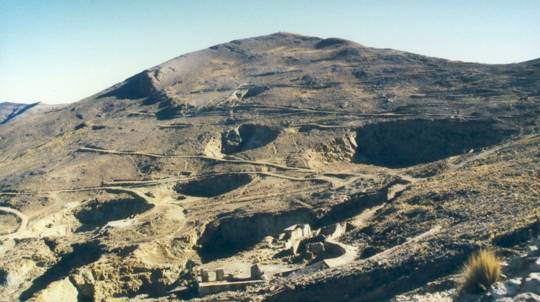
Collapsed craters from underground mining by block caving
III. Groundwater must be pumped out of the mining tunnels. This “dewatering” brings down the level of the surrounding groundwater—in a state where water is as precious as copper. Resolution Copper may propose a method to return the water to the water table, but as any expert will tell you (Eric Holler, Bureau of Reclamation, Tucson, Arizona) it is a difficult task to return water to the groundwater—especially as the groundwater recedes further and further—to 7,000 ft.!!! This tendency was observed at San Manuel in Arizona.
Ground water that infiltrates the mine workings must be pumped to the surface in order for underground operations to proceed. Sumps are used to dewater the underground workings, pumping water through two lines to the surface through shaft 1 (approximately 1,800 gpm) and shaft 2 (approximately 3,000 gpm).
Mine water is combined in a 24-inch steel pipe and stored in a one acre settling pond prior to storage in two 100,000 gallon holding tanks for subsequent use at the mill. (It was not determined if the settling pond is lined.) Five 2,000-2,500 gpm pumps located adjacent to the holding tanks in the No. 3 yard area send water to the mill. Each pump's operating status is monitored from the mine surface control center, and they are inspected daily. (Magma, 1992) Dewatering in the underground mine workings has created a large cone of depression in the area of the mine.
[For entire report, see: https://www.epa.gov/epaoswer/other/mining/techdocs/copper/copper3.pdf]
In Tombstone, Arizona, underground mining was stopped due to problems of pumping water out of tunnels.
Even if the water is pumped to another area, there is danger of subsidence from compaction of the soil from the lowering of the groundwater. As you can see from the map below, Arizona is already high on the list for subsidence. Following is excerpt United States Geological Survey (USGS in Georgia) report
[ https://ga.water.usgs.gov/edu/earthgwlandsubside.html]:
Causes of Land Subsidence
Land subsidence is most often caused by human activities, mainly from the removal of subsurface water. This pictures shows a fissure near Lucerne Lake in San Bernardino County, Mojave Desert, California (photograph by Loren Metzger). The probable cause was declining ground-water levels.
Ground-water pumping and land subsidence
Compaction of soils in some aquifer systems can accompany excessive ground-water pumping and it is by far the single largest cause of subsidence. Excessive pumping of such aquifer systems has resulted in permanent subsidence and related ground failures. In some systems, when large amounts of water are pumped, the subsoil compacts, thus reducing in size and number the open pore spaces in the soil the previously held water. This can result in a permanent reduction in the total storage capacity of the aquifer system.
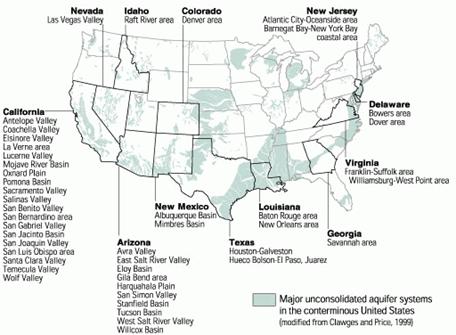
IV. Mining, particularly smelting, destroys the landscape, ecosystem and habitat.
Mining is a dirty business. Chemicals are used in every phase. Resolution claims that it will smelt off-site, but it will smelt on some site somewhere—causing serious air and soil pollution. The smelting process releases toxins into the air. In Arizona, the smelter in Douglas was closed down for environmental reasons. At this time, Hayden, AZ is being evaluated as a superfund site because of the smelting operations. Further, residents of El Paso, who have taken the brunt of smelting operations, have succeeded in getting rid of smelters there. Next month, the EPA will oversee soil cleanup at four homes near the Iron King mine in Arizona. All one has to do is drive the short distance up to Globe to see the havoc that smelting creates on the landscape.
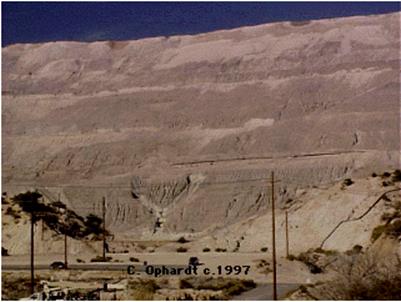
Large man-made piles of mining waste stretch for several miles in Globe, Arizona
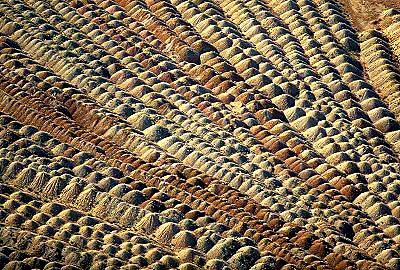
Arial photo of waste rock piles, Pinal County, Arizona
Smelting environmental impact report from World Bank Group: Pollution Prevention and Abatement Handbook (July, 1998P
Waste Characteristics
The principal air pollutants emitted from the processes are sulfur dioxide and particulate matter. The amount of sulfur dioxide released depends on the characteristics of the ore—complex ores may contain lead, zinc, nickel, and other metals—and on whether facilities are in place for capturing and converting the sulfur dioxide. SO 2 emissions may range from less than 4 kilograms per metric ton (kg/t) of copper to 2,000kg/t of copper. Particulate emissions can range from 0.1 kg/t of copper to as high as 20 kg/t of copper.
Fugitive emissions occur at furnace openings and from launders, casting molds, and ladles carrying molten materials. Additional fugitive particulate emissions occur from materials handling and transport of ores and concentrates.
Some vapors, such as arsine, are produced in hydrometallurgy and various refining processes. Dioxins can be formed from plastic and other organic material when scrap is melted. The principal constituents of the particulate matter are copper and iron oxides. Other copper and iron compounds, as well as sulfides, sulfates, oxides, chlorides, and fluorides of arsenic, antimony, cadmium, lead, mercury, and zinc, may also be present. Mercury can also be present in metallic form. At higher temperatures, mercury and arsenic could be present in vapor form. Leaching processes will generate acid vapors, while fire refining processes result in copper and SO 2 emissions. Emissions of arsine, hydrogen vapors, and acid mists are associated with electro-refining.
Wastewater from primary copper production contains dissolved and suspended solids that may include concentrations of copper, lead, cadmium, zinc, arsenic, and mercury and residues from mold release agents (lime or aluminum oxides). Fluoride may also be present, and the effluent may have a low pH. Normally there is no liquid effluent from the smelter other than cooling water; wastewaters do originate in scrubbers (if used), wet electrostatic precipitators, cooling of copper cathodes, and so on. In the electrolytic refining process, by-products such as gold and silver are collected as slimes that are subsequently recovered. Sources of wastewater include spent electrolytic baths, slimes recovery, spent acid from hydrometallurgy processes, cooling water, air scrubbers, washdowns, stormwater, and sludges from wastewater treatment processes that require reuse/recovery or appropriate disposal.
The main portion of the solid waste is discarded slag from the smelter. Discard slag may contain 0.5–0.7% copper and is frequently used as construction material or for sandblasting. Leaching processes produce residues, while effluent treatment results in sludges, which can be sent for metals recovery. The smelting process typically produces less than 3 tons of solid waste per ton of copper produced.
For entire report, see: https://www.ifc.org/ifcext/enviro.nsf/AttachmentsByTitle/gui_copper_WB/$FILE/copper_PPAH.pdf
V. Enhanced pollution due to technological processing. Waste elements that are put into the waste heaps release toxins into the environment, in an affect called “technologically enhanced naturally occurring radioactive materials” (TENORM) by Environmental Protection Agency. In other words, when you bring toxic metals, which are buried in the ground with no potential to harm human health, to the surface, put them in waste dumps exposed to the air, and subject them to various technological processes, there is a potential for adverse affects on human health. This is particularly true in Arizona where there are abundant deposits of radioactive metals and poisonous arsenic. In 1999, Environmental Protection Agency in Washington, D. C. published a report on this uranium and radioactive chemicals in the “Copper Belt” of Southern Arizona. Following is an excerpt from that report:
Nearly all rocks, soils, thorium, radium, radioisotopes,naturally occurring radioactive purposefully or inadvertently technologically enhanced naturally as any naturally occurring human exposure has been activities (NAS, 1999). . . .
Levels in excess of the federal MCLs and state guidelines were found in groundwater and surface water samples, as well as soil and sediment samples at abandoned and active copper mines. TENORM exceedences were also found in groundwater at active and inactive copper mines. Uranium byproducts were recovered from heap leach dumps and in-situ operations that feed SX-EW and ion exchange circuits at several copper mines. Radioactivity was discovered in copper mineral processing waste streams. Elevated levels of radioactivity were also found to occur in the process solutions and process wastes.
For entire report, see: www.epa.gov/radiation/docs/tenorm/402-r-99-002.pdf
VI. Tunnel mines are hazardous to the lives of the workers. There have been 5 major cave-ins, resulting in deaths, in the past year. Two in West Virginia mining area, one in Mexico, one in Canada and one in Australia. Isn’t this warning enough of the danger of tunnel mining. On a recent trip to Superior, a resident, who was daughter and wife of miners, told me that her son would never go into a tunnel. It was too dangerous. He would drive to Phoenix to get a job if he had to, but she would never allow him to go into a tunnel—and he agreed with her.
VII. Build the jobs the people will come! We do not need more people in Arizona. Already the water supply in many areas is in jeopardy due to over-pumping of groundwater, which is thousands of years old and cannot be replaced. With the current rate uncontrolled growth of population and lack of competent water management (even in the active management areas), it is no longer a question of “will?” Arizona become uninhabitable, but “when?”
VIII. Reclamation is an expensive endeavor. Arizona State does not require bonds for cleanup as does other states, including New Mexico. Taxpayers could be stuck with a big bill should the company fail economically. New Mexico is requiring Phelps Dodge to put up bonds from a third part for $375 million for environmental cleanup of just one of its mines. If Arizona continues this practice, companies may choose to mine in Arizona. Is this for the "right" reasons?
For entire story, see https://www.bizjournals.com/albuquerque/stories/2002/02/25/story3.htmlLegislature kills mining bill
New Mexico Business Weekly - February 22, 2002
By Eric BillingslyThe New Mexico State Legislature killed a bill during the last legislative session that environmentalists say could have put state taxpayers at risk of footing a $375 million environmental cleanup bill at Chino Mines copper mine outside of Silver City.
The bill, sponsored by state Sen. Ben Altamirano, ( D-Silver City), would have amended the New Mexico Mining Act to allow Chino to have its parent company, Phelps Dodge, provide 100 percent financial assurance for a closure bond required by state law. …
The law says that mining companies must obtain financial assurance bonds from a third party, which are used as guarantees that environmental cleanup and reclamation will be completed once a mining site closes.
"If the bill had gone through, it posed substantial risk to New Mexico taxpayers," says Helga Schimkat, executive director of the New Mexico Voters Alliance. She says allowing a parent company that is in the same business as its subsidiary to provide financial assurance is a risk because both are dependent on the same market fluctuations. If both the subsidiary and parent company closed at the same time, New Mexico taxpayers would have to pay $375 million for environmental cleanup costs, she says. Phelps spokesman Richard Peterson says that "Senator Altamirano's bill was a response to the truly astronomical increase in the cost of surety bonds -- typically used for reclamation bonds -- since September 11th."
[email protected] | 768-7008 x101
ADDENDUM:
Alternative methods of processing copper are also a threat to the environment:
Electro-winning—considered to be more environmental friendly. This is true because at least it eliminates tailing impoundments. However, the pits (in this case tunnels), waste dumps and leaching areas remain. The leaching areas are out where the copper bearing oxide rocks are sprayed with sulfuric acid, the “pregnant” leach solution is piped from these open-areas that scar the landscape to the electro-winning processing plant. The claim is that very diluted amounts of sulfuric acid is added to the leach dumps.
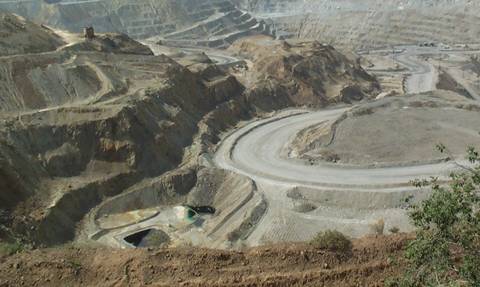
One of the Leaching Area near Pit Operation in Chino, New Mexico
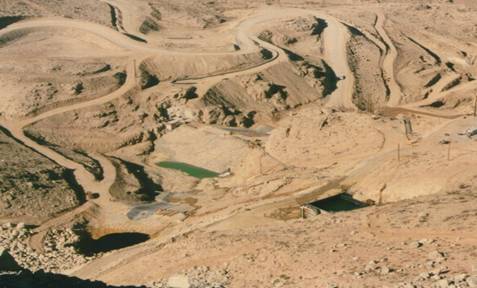
Sulfuric Acid Leach Solution Ponds
However, large open ponds of extremely high sulfuric acid content. The claim is that animals won’t approach it, but if any bird was to land on it, the evidence would be destroyed in moments. Further, it is claimed that these are lined ponds, but there are numerous leaks and spills from the leaching operations as verified by the following data:
- Data from Arizona Department of Environmental Quality files on spills at Sierrita and Silverbell Mines, Pima County Arizona.
- Sulfuric and other contaminant data from leach solution impoundments at Phelps Dodge Sierrita Operation in Green Valley, Arizona.
- Table of contaminants in mill area of Sierrita Mine, Green Valley, Arizona. Note the fluctuations in the numbers because of the continual spills.
For information on contacting the Arizona senators who proposed this exchange, see:
